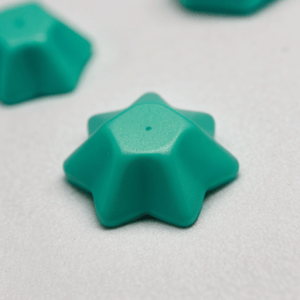
Selecting the right binder excipient is a critical step in pharmaceutical formulation. Binders play a crucial role in ensuring the cohesiveness of the tablet, impacting its mechanical strength, disintegration, and overall efficacy. This article delves into the factors to consider when choosing a binder excipient, supported by insights from industry experts and real-world examples.
Understanding Binder Excipients
Binders are substances that promote the adhesion of powder particles in tablet formulations. They are essential for transforming powder into granules, which are then compressed into tablets. The choice of binder can significantly affect the tablet’s properties, including its hardness, disintegration time, and bioavailability.
Key Factors in Binder Selection
1. Drug Properties
The properties of the Active Pharmaceutical Ingredient (API) are paramount. Factors such as solubility, compressibility, and particle size influence the choice of binder. For instance, poorly compressible drugs may require strong binders like liquid glucose or sucrose, while drugs with good compressibility can use weaker binders like starch paste[5].
2. Formulation Process
The manufacturing process also dictates binder selection. Different processes such as wet granulation, dry granulation, and direct compression have varying requirements. For example, Kollidon VA64 is favored for dry granulation due to its excellent compressibility and plasticity, making it suitable for roller compaction processes[1].
3. Binder Properties
The intrinsic properties of binders, such as viscosity, dissolution kinetics, and wetting properties, are crucial. For highly soluble formulations, binders with fast dissolution kinetics and low viscosity are preferred. Conversely, for poorly soluble formulations, binders with high viscosity and slow dissolution kinetics are more effective[2].
Expert Insights
Rob Harris, Chief Technical Officer at Catalent, emphasizes the importance of understanding the attributes of excipients used in formulations. “Better functionality for excipients has been a major improvement over the last decade. For instance, excipients that improve powder flow are of great interest to formulators,” he notes[1].
Practical Examples
Kollidon VA64
Kollidon VA64 is widely used in dry granulation due to its good compressibility and plasticity. It is particularly effective in roller compaction processes, making it a go-to choice for many formulators[1].
HiCel™ from Sigachi
HiCel™ is a versatile excipient known for its excellent binder characteristics. It offers high-density grades to improve tablet flow and can be customized for moisture-sensitive APIs. HiCel™ also enhances content uniformity, making it a popular choice among formulators[3].
Pullquote
“Choosing the right binder excipient is not just about the binder itself but understanding the interplay of various factors such as drug properties, formulation process, and binder attributes.” – Rob Harris, Chief Technical Officer, Catalent
Conclusion
Selecting the right binder excipient is a multifaceted decision that requires a thorough understanding of the API properties, formulation process, and binder characteristics. By considering these factors and leveraging expert insights, formulators can enhance the quality and efficacy of their pharmaceutical products.
Sources
- [1] The Medicine Maker: Choosing the Right Excipients for the Right Job
- [2] NCBI: Identifying Critical Binder Attributes to Facilitate Binder Selection
- [3] YouTube: How to select the best binders for Pharmaceutical Tablet Formulation?
- [4] Pharma Excipients: How to select the right excipient?
- [5] LFA Tablet Presses: The Best Binders To Use In The Production Of Your Pills
Citations:
[1] https://themedicinemaker.com/discovery-development/choosing-the-right-excipients-for-the-right-job
[2] https://www.ncbi.nlm.nih.gov/pmc/articles/PMC7913514/
[3] https://www.youtube.com/watch?v=LdcL5IBcTa4
[4] https://www.pharmaexcipients.com/news/how-to-select-the-right-excipient/
[5] https://www.lfatabletpresses.com/articles/binder-concentration-properties-tablet-manufacturing

